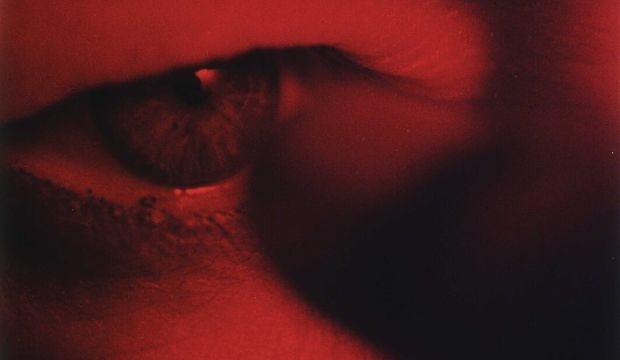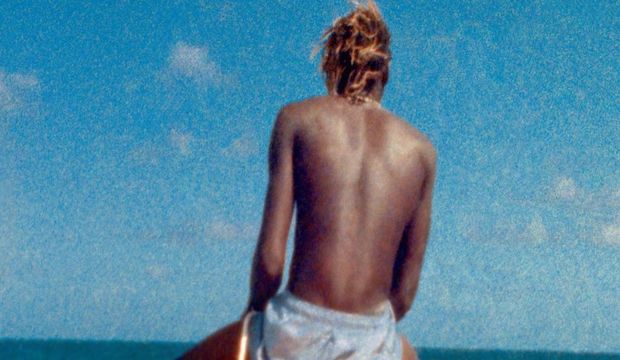Steve McQueen exhibition, Tate Modern review ★★★★★
Artist and director Steve McQueen lays bare the human condition at Tate Modern
McQueen’s 2009 film Static. Photograph: © Steve McQueen/courtesy the artist, Thomas Dane Gallery and Marian Goodman Gallery
To limit the spread of Covid-19, certain UK museums have decided to close. Those due to attend an event should contact their ticket provider for more information.
Steve McQueen’s exhibition at Tate Modern hits at the soft spots in our humanity. There’s a lot to take in, a lot to think about – death, ageing, tragedy, suffering – all heightened by the beauty and vulnerability of the human body.
McQueen is an over-achiever if ever there was one. The London born artist and director was awarded the Turner Prize in 1999, but also cracked Hollywood with an Oscar, a Bafta and a Golden Globe for his 2013 film 12 Years a Slave. This exhibition brings together 14 of his major works from his first earliest film to on-going projects. It is also one that you will struggle to forget.
On entering, large screen shows a view of the Statue of Liberty from a circling helicopter. She stands, a symbol of hope and new beginnings against a pink sky, but the sheen is somewhat dulled by this close-up perspective, which shows the bird nest in her arm pit and the dirt on her crown. Examined too closely, this synonym for the American dream is flawed.
The adjacent video shows a series of images representing life on Earth. They include animals and school children, cities and chemical formulas. These were selected by NASA in 1977 to represent the best of humanity and were sent into deep space aboard the Voyager I and II missions. They are still out there, having journeyed beyond the furthest reaches of the Solar System. There is nothing overtly negative in McQueen's video collage of these photographs, but the audio running over the footage is that of a made-up language. McQueen is telling us that everything presented here is, in fact, nonsense.
In a small room just beyond these pieces there is hammering and darkness as South African miners descend into the bowels of the earth. This is the deepest gold mine in the world. It operates 24 hours a day, with temperatures reaching over 90 degrees Celsius. The men who toil in these hellish conditions seem superhuman in their work, but, at the same time the drudgery of this day-to-day existence is dehumanising.

A still from the 2004 film Charlotte. Photograph: © Steve McQueen/courtesy the artist, Thomas Dane Gallery and Marian Goodman Gallery
Next, the body, and its vulnerabilities, are laid bare with close-ups of the ageing eyelids of actress Charlotte Rampling, which McQueen pulls and prods. He does the same with a video of his own nipple, caressing it one moment, aggressively flicking it the next. These silent, intimate moments act as a primer for the videos to follow. Our bodies are mutable, McQueen seemed to be telling us. And pleasure is often followed by pain.
7th November (2001) follows, and it is a difficult watch. All one sees is the top of a badly scared, bald head. But the audio fixates. The title refers to the date that McQueen’s cousin Marcus accidentally shot dead his brother, and his voice tells of this tragic night, the night he killed his ‘soul mate’. It is a harrowing and graphic account, told so evocatively that the emotional after-image will linger long after you leave the exhibition. A brief moment, a misfiring weapon, ended one life and scarred another irrevocably. This is McQueen the director at his most minimal and most powerful.
The footage in the next room touches on family and relationships again, this time filmed in the claustrophobic confines of a recording booth. The musician Adrian Thomas, also known as Tricky, performs the song Girls from his 2001 album Blowback. Tricky’s body shakes and judders as he sings in an almost masturbatory frenzy. He is singing of girls and absent fathers with a mixture of passion and defiance.
Each room of this exhibition builds on the next, like a thesis on the human condition. The last, however, is an anti-climax. End Credits is dedicated to the American actor and civil rights activist Paul Robeson, who was put on the FBI surveillance list. Documents from FBI files scroll up the screen with a voice-over reading out the contents of the pages. The story is an important one, but is lost in the execution.

Steve McQueen, Ashes (2002–2015) © Steve McQueen/courtesy the artist
Instead, you should end your visit with Ashes. the film plays on a double-sided screen. One side shows footage of a smiling young man, striped to the waist, filmed against a blue sky as his boat rides the ocean waves. On the other side of this screen a group of men prepare a tomb. McQueen first filmed the man on the water, whose nickname was Ashes, when shooting a film in Grenada. Later he learned that Ashes had died, aged just 25 years old. McQueen then returned to record the construction of the young man’s final resting place. As you watch the footage of Ashes on the sea, you can hear the tools digging his grave; as you watch the preparation of his headstone, you can hear the waves.
This exhibition will stay with you. Here is McQueen’s conceptual clout, pared with his extraordinary ability to tell stories that resonate. It is bleak, yes, but there is much beauty, too. This is an experience that will be impossible to forget.
Steve McQueen’s exhibition at Tate Modern hits at the soft spots in our humanity. There’s a lot to take in, a lot to think about – death, ageing, tragedy, suffering – all heightened by the beauty and vulnerability of the human body.
McQueen is an over-achiever if ever there was one. The London born artist and director was awarded the Turner Prize in 1999, but also cracked Hollywood with an Oscar, a Bafta and a Golden Globe for his 2013 film 12 Years a Slave. This exhibition brings together 14 of his major works from his first earliest film to on-going projects. It is also one that you will struggle to forget.
On entering, large screen shows a view of the Statue of Liberty from a circling helicopter. She stands, a symbol of hope and new beginnings against a pink sky, but the sheen is somewhat dulled by this close-up perspective, which shows the bird nest in her arm pit and the dirt on her crown. Examined too closely, this synonym for the American dream is flawed.
The adjacent video shows a series of images representing life on Earth. They include animals and school children, cities and chemical formulas. These were selected by NASA in 1977 to represent the best of humanity and were sent into deep space aboard the Voyager I and II missions. They are still out there, having journeyed beyond the furthest reaches of the Solar System. There is nothing overtly negative in McQueen's video collage of these photographs, but the audio running over the footage is that of a made-up language. McQueen is telling us that everything presented here is, in fact, nonsense.
In a small room just beyond these pieces there is hammering and darkness as South African miners descend into the bowels of the earth. This is the deepest gold mine in the world. It operates 24 hours a day, with temperatures reaching over 90 degrees Celsius. The men who toil in these hellish conditions seem superhuman in their work, but, at the same time the drudgery of this day-to-day existence is dehumanising.

A still from the 2004 film Charlotte. Photograph: © Steve McQueen/courtesy the artist, Thomas Dane Gallery and Marian Goodman Gallery
Next, the body, and its vulnerabilities, are laid bare with close-ups of the ageing eyelids of actress Charlotte Rampling, which McQueen pulls and prods. He does the same with a video of his own nipple, caressing it one moment, aggressively flicking it the next. These silent, intimate moments act as a primer for the videos to follow. Our bodies are mutable, McQueen seemed to be telling us. And pleasure is often followed by pain.
7th November (2001) follows, and it is a difficult watch. All one sees is the top of a badly scared, bald head. But the audio fixates. The title refers to the date that McQueen’s cousin Marcus accidentally shot dead his brother, and his voice tells of this tragic night, the night he killed his ‘soul mate’. It is a harrowing and graphic account, told so evocatively that the emotional after-image will linger long after you leave the exhibition. A brief moment, a misfiring weapon, ended one life and scarred another irrevocably. This is McQueen the director at his most minimal and most powerful.
The footage in the next room touches on family and relationships again, this time filmed in the claustrophobic confines of a recording booth. The musician Adrian Thomas, also known as Tricky, performs the song Girls from his 2001 album Blowback. Tricky’s body shakes and judders as he sings in an almost masturbatory frenzy. He is singing of girls and absent fathers with a mixture of passion and defiance.
Each room of this exhibition builds on the next, like a thesis on the human condition. The last, however, is an anti-climax. End Credits is dedicated to the American actor and civil rights activist Paul Robeson, who was put on the FBI surveillance list. Documents from FBI files scroll up the screen with a voice-over reading out the contents of the pages. The story is an important one, but is lost in the execution.

Steve McQueen, Ashes (2002–2015) © Steve McQueen/courtesy the artist
Instead, you should end your visit with Ashes. the film plays on a double-sided screen. One side shows footage of a smiling young man, striped to the waist, filmed against a blue sky as his boat rides the ocean waves. On the other side of this screen a group of men prepare a tomb. McQueen first filmed the man on the water, whose nickname was Ashes, when shooting a film in Grenada. Later he learned that Ashes had died, aged just 25 years old. McQueen then returned to record the construction of the young man’s final resting place. As you watch the footage of Ashes on the sea, you can hear the tools digging his grave; as you watch the preparation of his headstone, you can hear the waves.
This exhibition will stay with you. Here is McQueen’s conceptual clout, pared with his extraordinary ability to tell stories that resonate. It is bleak, yes, but there is much beauty, too. This is an experience that will be impossible to forget.
TRY CULTURE WHISPER
Receive free tickets & insider tips to unlock the best of London — direct to your inbox
| What | Steve McQueen exhibition, Tate Modern review |
| Where | Tate Modern, Bankside, London, SE1 9TG | MAP |
| Nearest tube | Southwark (underground) |
| When |
13 Feb 20 – 11 May 20, Sunday–Thursday 10am–6pm. Friday–Saturday 10–10pm |
| Price | £13 |
| Website | Click here for more information |